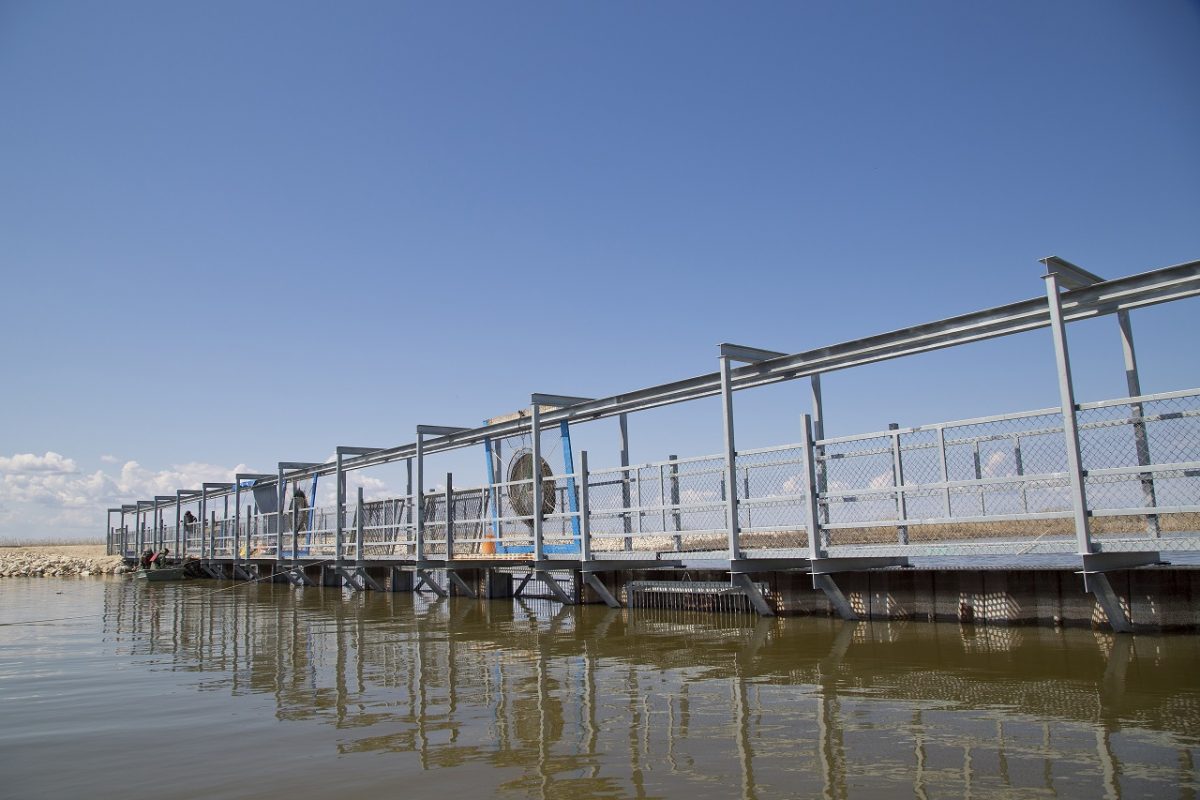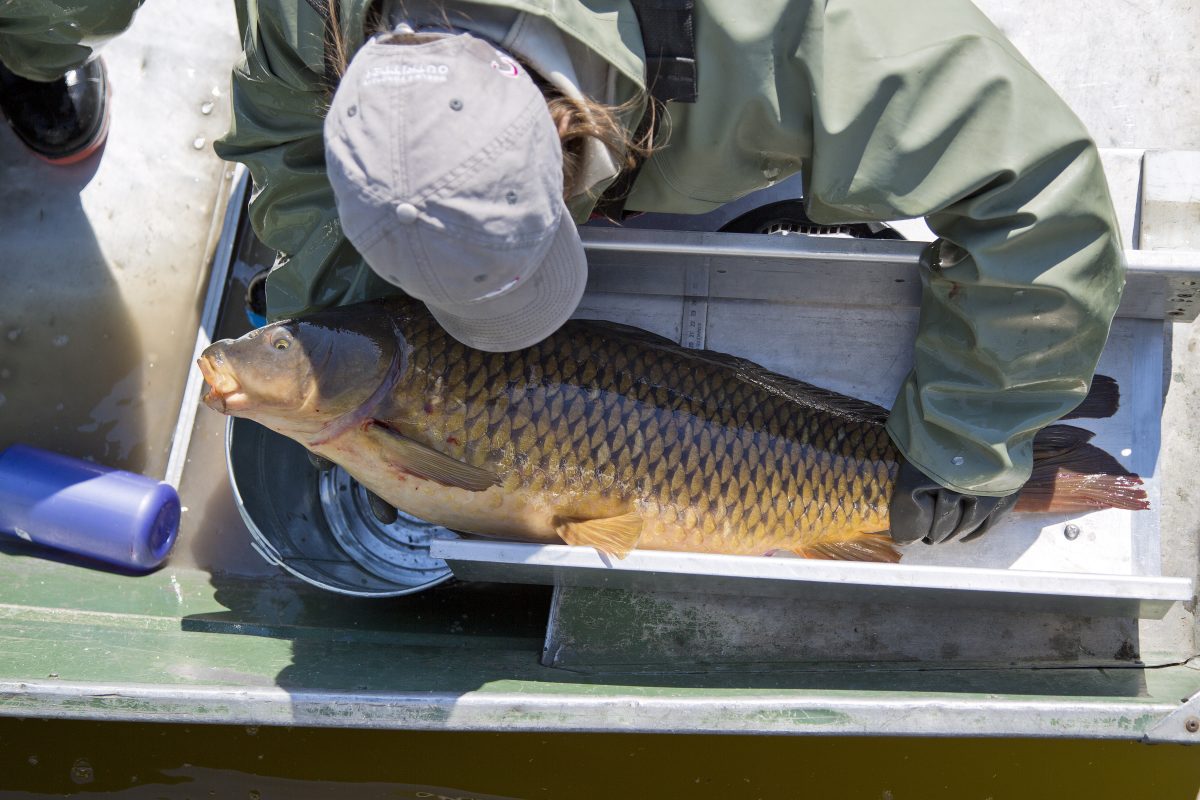Cleaning up after common carp
Researchers shut out an invasive fish species to help restore Delta Marsh.

Delta Marsh is famous for its wildlife – specifically, its ducks. Historically, the habitat drew staging birds by the thousands, and outdoorspeople right with them. But in the last four or five decades, the neighbourhood has gone to carp.
Common carp (Cyprinus carpio), an invasive species that first appeared at Delta Marsh in the 1950s, made such a mess of the marsh that canvasback and lesser scaup started going elsewhere. Invertebrate and native aquatic plant numbers dropped. The native fish populations may be affected too.
Every spring, the carp migrate in to Delta Marsh from Lake Manitoba. They are drawn to spawn in the warm, shallow water of the marsh.
The carp also feed in the marsh. They rake the wetland floor and stir up sediment. This restricts sunlight, stunting the growth of aquatic plants. Invertebrates that rely on those plants for food and cover suffered – as did the numbers of ducks.
The only way to return the natural clarity to the marsh was to shut out the carp.

DUC/Jeope Wolfe
Screened for admission
“It’s the big carp that really tear up the marsh,” says research scientist Dale Wrubleski, PhD, who heads DUC’s research and monitoring work at Delta Marsh. “We drop the screens before those carp show up.”
Wrubleski says the carp typically migrate a few weeks later than native fish species like northern pike. DUC, in partnership with the Province of Manitoba, created a project called Restoring the Tradition to help the ailing wetland. The project included the construction of dikes and carp exclusion structures in three areas at Delta Marsh, where channels connect the wetland to Lake Manitoba.
Narrow openings between the steel bars of the exclusion screens prevent large common carp from entering Delta Marsh. And dikes built adjacent to the exclusion structures keep the invasive species from sneaking around the structures when water levels peak.

DUC/Jeope Wolfe
“There are always a few carp that come early. We can never keep them all out, but we have substantially reduced the abundance,” says Wrubleski.
Now in its sixth year, the project is nearing the end of its first phase. The reduction in carp has improved the water clarity, which has produced significant improvements in the amount of submerged vegetation and invertebrates. And that’s enticed other species to return.
“Sago pondweed is one example of a submersed plant that used to be dominant at Delta Marsh, but pretty much disappeared with the carp,” says Wrubleski. “Now we’re starting to see it come back, and the canvasbacks are responding.”
“We’re seeing the highest waterfowl numbers on the marsh in 30 or 40 years.”

DUC/Jeope Wolfe
Like uninvited guests, Wrubleski says common carp are tough to get rid of. Though they may never leave entirely, scientists have shut the gate on their damaging behaviour – and created a more inviting environment for Delta Marsh’s native wildlife.



